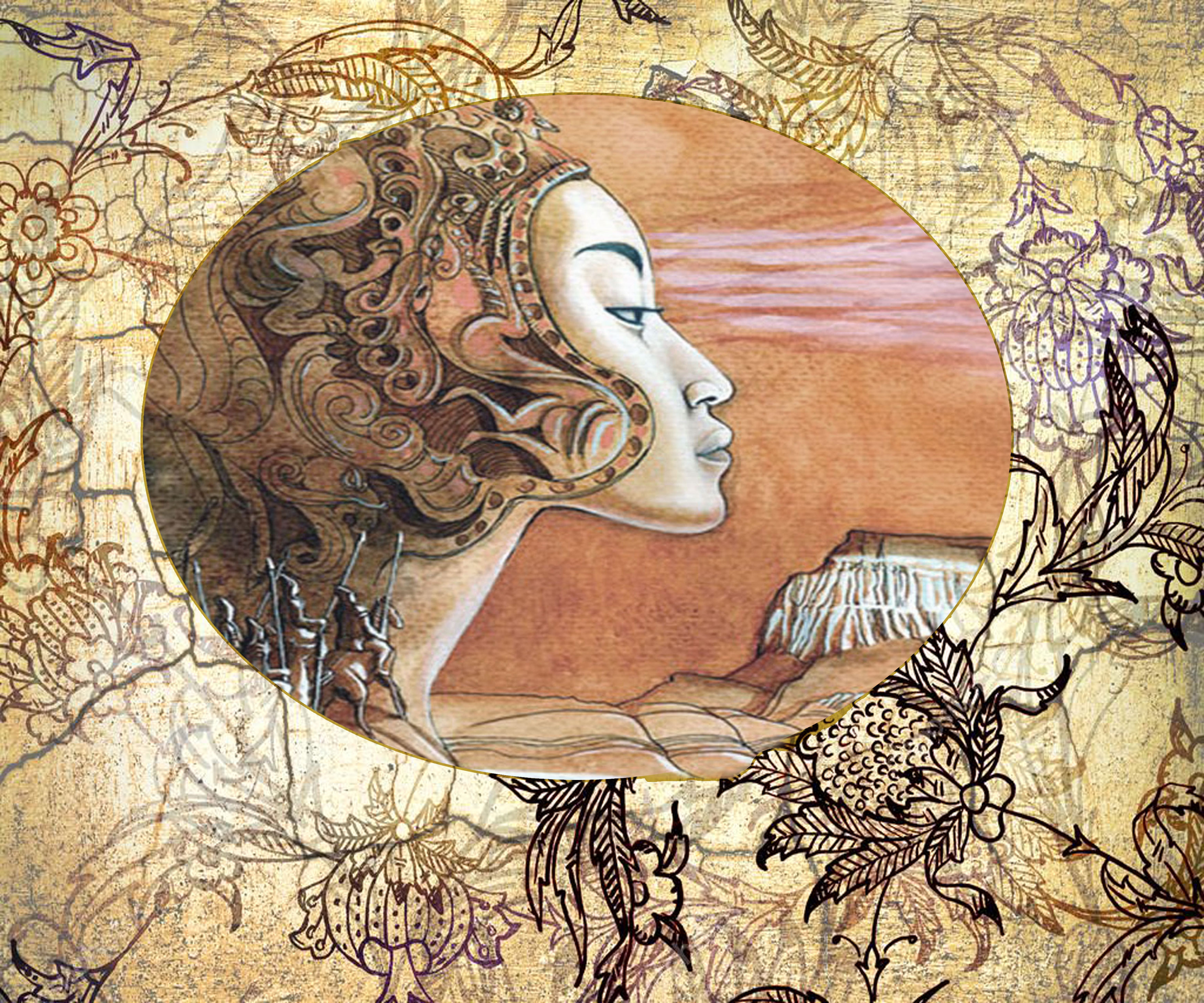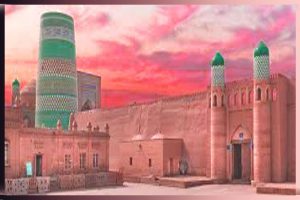
Somewhere there near the sea Wurukarta, now Aral Sea is laying a land of massagets. Two rivers Arankha (Amu Darya) and Yaksart (Sirdarya) fall into the sea. The rivers break into hundreds branches and form the swamps. There is a dessert “Black sands” to the South of Arankha. To the East is a dessert “Red sands”. In desserts, mountains, islands live people who call themselves “Massagets”- “Great gets”. They divided into seven tribes: saki-khaumavarka, derbiki, khorezms, apasaki, yaksarts, tokhars and avangals. Each tribe divide itself into two brotherhoods. And each brotherhood into four families.
Somedays the Massagets were a part of Khorezm kingdom. But after the first camping of Persian and conquest of Khorezm the massagets scattered throughout the earth.
From the times of camping of Kir I the unbowed tribes give no truce to the Persians. So one day Dariy I, the son of Gistap decided to start a camping and to conquer huge lands of massagets and to revenge to the head of their ancestor Kir, which was drown in the blood by the queen Tamiris.
In order to insure already huge and strong army the Persian find that one rotten apple, the traitor in the face of the family of deer.
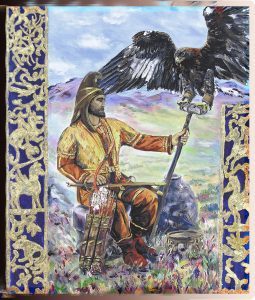
The deer to the coming of their new lords decide to eradicate some other families. And they start their heinous plot from the eagle`s family. The leader of the eagle`s family was warrior Sokhrab, fighting his youth side by side with queen Tamiris. The son of Sokhrab was a brave warrior Shirak what means a lion. The tribe of eagles was small and lived in dessert.
One night the traitors-deer attack the eagles. They severely kill their sleeping tribesmen. In cruel battle they kill the brave Sanobar the wife of Sokhrab and mother of Shirak. Sokhrab and Shirak with the last thirty warriors ask for the asylum the family of turtles in swamps, where the leader is wise Kunkhaz.
But in order to be accepted by the turtles Shirak is going to pass a challenge. The turtles put up a deft shooter who kills a flying skylark in the night. But Shirak copes with more complicated task. Choosing in the flock the biggest ox whose size scaring ten strong men, he kills him with his hands. His courage and pure soul win the heart of young and beautiful Farogat the daughter of Kunkhaz.
In face of Farogat Shirak finds the source of spirit forces and hopes. But the happiness was destined to last a few days. The Persians with traitors-deer attack the fort of turtles. With deception as their tribesmen yaksarts who came them to the aid the enemies take over the fort and kill the most people and also Farogat.
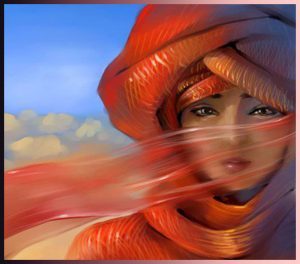
But defeat can`t oppress the spirit of massagets. They summon all the tribes of massagets together. To clarion call come four thousand yaksarts, four thousand apasaks, three thousand avgals, five hundred nomadic khorezms and thousand sarmats. These tribes formed the army of twenty thousand warriors. But what still can this army against perfect equipped eighty thousand army of Persians?
Sokhrab proposes to win them with a trick. This trick supposed that of the massagets has to desert to the enemy and bring them to the desserts. And when the Persians will be weakened by the hunger and thirst the massagets will finish with Dariy. Everyone raised his hand to go to the enemy`s area knowing that it would be irrevocable campaign. Sokhrab chooses his son brokenhearted Shirak. Could he to choose a someone other and to send a someone else’s child and to save his own? He was a man of other mind. He took of the most precious that he had for the freedom of people. Shirak with joy accepts his mission hoping to the soon meeting with lovely Farogat.
Shirak comes to Gobria the general counsel of Dariy with bloody face and convinced him that the leader of the tribe Sokhrab took away his wife and cut into pieces his face. So he is hunger for the revenge and ready to show the way them to the Sokhrab`s camp. Shirak successfully passes the tests of Gorbia and in a day all Persian army move in and out with their new guide. Shirak promises that only four from twelve days will take the way through the dessert and then they will have a food, water and their aim. The route of anger that is was the name of the way that Shirak lead regiment of Dariy.
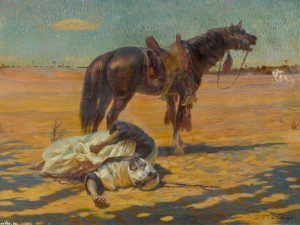
The dessert! The sun makes burning the copper clothes of the hired warriors melting their skin. The people drink water nonstop. The purveyance of water taken only for four days vanished into the air. The night brings intolerable gold. The people chattering the teeth dream the midday heat. Surviving the hurricane on the second day the army lost 500 hired warriors Greeks. Every day the people, camels, horses, mules drawn in the mist of the hot sands. The hot breath of the hurricane dries up the bellows for saving the water. The guard kept an eye on Shirak days and nights. When the nights come and no one can see his face he is smiling. On the fourth day exhausted with thirst the elephants broke the chains and treaded hundreds of warriors. Every hour takes away hundreds of lives, perished with thirst and bites of the elusive insects, spiders and snakes. The army that passed many severe ways now were dying only because they did not have more water in the bottles, the water that is so much in the world, which they used only yesterday washing their bodies and bloody hands.

On the sixth day the people saw the lake. Everybody rushed in it except Shirak. Only dessert and he knew that the water in this lake was so much salted that only one sip eroded the lips as a poison. And the whole dessert flinched of the cry of those doomed. Dariy realized betrayal. He promised the illimitable wealth to Shirak if he will show the way to the water. But Shirak already counted the seconds before the reunion with Farogat.
At that night Dariy with the small group of warriors left his army dying in the dessert. The massagets finish with the enemy`s army, being at the back of the scared Dariy. Nevertheless, Dariy managed to survive.
The remains of Shirak severed by a poleax carried through the all tribes of massagets. The people cut their faces as it did Shirak leaving to the enemy. They tore their lips as Shirak`s lips were cracked from the thirst. The drums beat at every city. Everyone mourned Shirak as the son, brother, father and husband.
The day comes and the people`s memory will forget about the feat of Shirak, but every grain of sand saves it forever.

 Language
Language